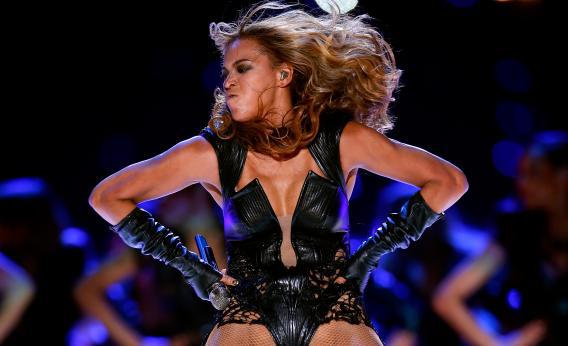Yesterday, Jacob Wheatley-Schaller tweeted, “I’m honestly not sure how my life has reached this point, but here we are.” Attached to that tweet was the image of an email he sent to an unnamed sportsbook regarding his “Beyoncé Prop Grading Issue.” Wheatley-Schaller had wagered that the singer would be sporting cleavage during the first song of her Super Bowl half-time show—and lost. “I’m having a hard time understanding why,” he wrote in his email, citing a definition of cleavage as the “hollow between a woman’s breasts, especially as revealed by a low neckline.”
This “propositional bet,” concerning an “occurrence or non-occurrence” not directly affecting a game’s outcome, was just one of many ridiculous wagers one could have made this year. How did prop betting in sports get to be such a big deal?
Accounts vary on the origins of prop betting; some sources say it began as early as the late 19th century. But according to David McIntire’s excellent longform report on the subject for SB Nation, the idea really took hold in Fenway Park in the early part of the 20th century. Julius “Sonny” Reizner, a professional gambler who spent his childhood hanging out around the Boston stadium, described bets being made on each play of the game—whether or not a player would strike out, get a hit, and so on—and explained, years later, “When I was in a position to do so, it was only natural to extend it to the Super Bowl.”
McIntire’s entire piece is worth a read, but here’s a very rough primer. Prior to the 1970s, Las Vegas casinos were not known for sports gambling. Once the large hotels decided they needed to compete with the smaller sportsbooks, casinos began to hire professional bettors. By the mid-1970s, “casual vacation bettors” had become a market for Las Vegas hotel sportsbooks, where novice gamblers could bet on events like where the space station Skylab would crash. While the Super Bowl brought lots of new business for the prop betting industry, by the end of the decade the activity still hadn’t fully flourished.
A watershed moment for prop betting occurred in 1980, when “Who shot J.R.?” fever gripped the nation. Reizner saw an opportunity and put up odds for character suspects as well as real-life figures, garnering national media interest and the appeal of “little old ladies from Iowa,” looking to place their bets as Reizner recalled in his book The Best of Sonny Reizner. While the Nevada Gaming Control put a stop to it—correctly assuming that producers involved with the show would know the outcome beforehand—this led the Vegas hotels to seek legal ways to extend prop betting. In 1986, the odds on whether or not William “The Fridge” Perry would score a touchdown during Super Bowl XX “intrigued an entire country.”
Since then, prop betting has spread into other sports as well—though the Super Bowl is probably where it thrives the most. As McIntire explains, in the ’90s, when several predictable blowouts left little excitement in the game itself, betting on other irrelevant matters helped drum up prop betting interest even more. Now, betting the over/under on how long the national anthem will be or whether or not a certain artist will make a surprise cameo during the show has become the norm.
As for Wheatley-Schaller’s complaint about his bet on Beyoncé: He was wrong. Deadspin correctly pointed out yesterday that Beyoncé began covered up, doing a brief, a capella version of “Love on Top,” and only revealed her cleavage during the second song of the set, “Crazy in Love.” The unlucky gambler admitted as much to me via email when I sought him out for more information, and later conceded on Twitter as well. “Was watching in a very loud bar,” he explained, “and had no idea she did that short part of ‘Love on Top.’”
